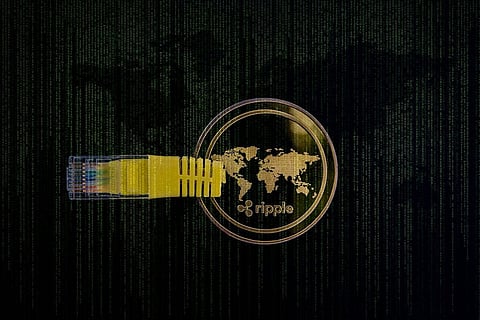

Use promocode TNM51 at www.giottus.com/profile#promo after registration to get Rs.51 worth free Bitcoin.
Blockchain technology is the fundamental basis of cryptocurrencies. It represents a database that collects data and information in the form of groups, also known as blocks, and each block of data is added to another to form a chain. Unlike other cryptocurrencies like Bitcoin and Ethereum, Ripple, a payment network, is not made of blockchain but rather a “hash tree.” It works like a blockchain since multiple nodes are used to facilitate transactions. Today we discover what Ripple (XRP) is and why it is a top 10 cryptocurrency.
XRP is the native token of the Ripple platform that was created by Ripple Labs, which facilitates trusted and immediate payments. Like any other cryptocurrency, XRP operates on a distributed ledger where many computers (validator nodes) verify transactions and keep track of all past XRP activity. The payment process consists of users initiating a transaction that sends information as a single value to a shared public database. Their validating servers and nodes share the data, and if distinct servers report a match, then the transaction is authorized and processed.
With XRP, Ripple aims to achieve high speed transactions. With Bitcoin, the usual ten-minute time to create a block may sometimes take up to an hour or more to complete, and with Ethereum, the typical time of around 15 seconds may take longer due to prioritization of critical transactions. XRP speeds up the process by using fewer nodes compared to Bitcoin or Ethereum and thus facilitates transactions in less than 4 seconds with a network fee that is lower than a cent.
The system runs efficiently. A user on Ripple who starts a transaction with multiple gateways but attempts to transfer the same amount of money to the gateway systems (say $100) will have all transactions except the first deleted. Individual distributed nodes that are distinct and unique, select which transaction was done first under 5 seconds. Ripple keeps a record of all IOUs in any given currency for any gateway or user.
The IOU credits and transactions that occur between all the Ripple wallets are publicly made available on the Ripple consensus ledger.
Although there is no central authority that decides the setting up of nodes and transaction confirmations, XRP is not a completely decentralized platform. Instead, its Ripple network is somewhat centralized. It maintains multiple unique node lists that users can select to verify transactions based on the participants they think are least likely to defraud them.
The Ripple network not only facilitates transactions with XRP but also with other cryptocurrencies, fiat currencies and other commodities.
The XRP token has a maximum supply of 100 billion, out of which more than 47 billion are in circulation. XRP currently ranks among the top 10 cryptocurrencies in the world with a price tag of around $0.85 per token, with nearly $40 billion market capitalization.
It has been recently marred by regulatory issues with the US SEC charging them with a lawsuit for being a unregistered security in 2020. The case is currently in court and has dragged the price of XRP down all of 2021 compared to wider market. The final decision from the lawsuit will be key in giving a huge fillip either way to XRP’s price action.
XRP suffered during the recent crypto market crash, hitting a low of $0.6 and even lower on other exchanges – revisiting its July dip. It has now managed to flip the $0.77 resistance into support, with its short term targets being $0.88 and $0.97. If a run fails to materialize, XRP will have a key level at $0.7 to rely on as support.
Source: TradingView, Binance
Ripple is a high-performance money transfer network that allows transactions that are substantially faster and considerably cheaper. Its primary goal is to provide more efficient means to send cross-border payments in the financial sector and particularly in the banking sector, by reducing costs and transaction times through the elimination of intermediaries. It has already partnered with many top regional institutions for payment transfer in Japan, the Philippines etc.
Clearly, the idea is ambitious, and deserves our attention. But its ongoing legal challenges perhaps make it somewhat premature to call for a bullish future. Having said that, the fundamental technology behind it is solid, and XRP has a large community and faithful shareholders for which it is still one of the most popular and used cryptocurrencies in the world.
Disclaimer:This article was authored by Giottus Cryptocurrency Exchange as a part of a paid partnership with The News Minute. Crypto-asset or cryptocurrency investments are subject to market risks such as volatility and have no guaranteed returns. Please do your own research before investing and seek independent legal/financial advice if you are unsure about the investments.